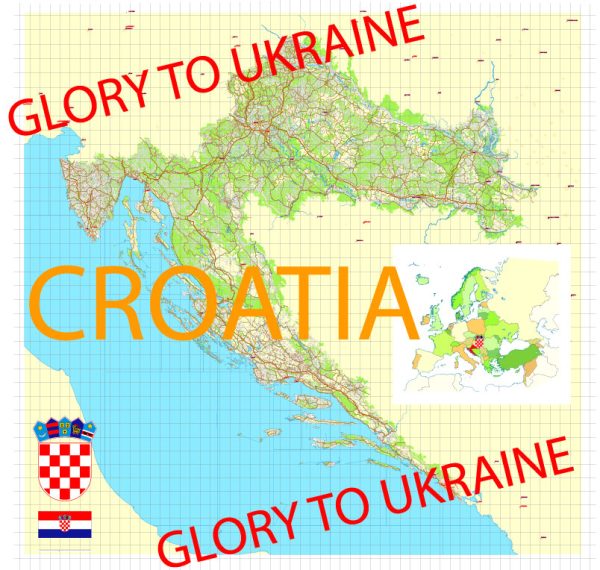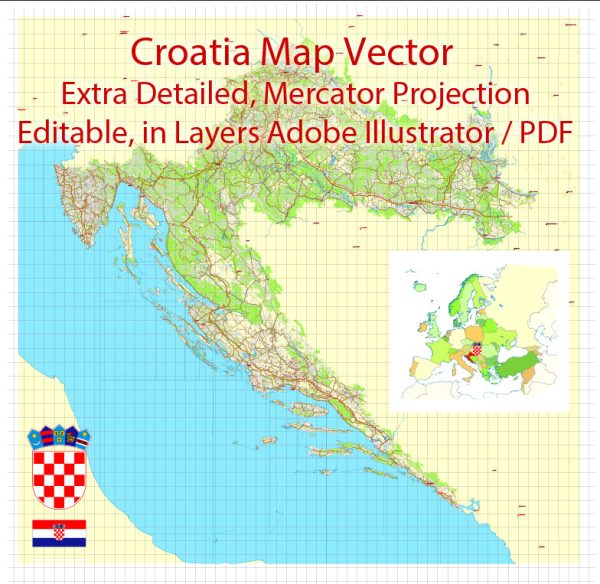Croatia is a country located in Southeastern Europe on the eastern shore of the Adriatic Sea. It is known for its diverse and picturesque landscapes, which range from the rugged Dinaric Alps in the interior to the beautiful coastline along the Adriatic Sea. Here’s an ecological description of Croatia:
- Coastal Areas: The Adriatic coast of Croatia is renowned for its stunning beauty. It features numerous islands, crystal-clear waters, and a Mediterranean climate. The coastal areas are home to a wide variety of flora and fauna, including olive trees, cypress, and various species of fish and marine life. The islands, such as Hvar, Korčula, and Brač, have unique ecosystems and are important for biodiversity.
- Forests: The interior of Croatia, particularly in regions like Gorski Kotar and Lika, is covered with dense forests. These forests are primarily composed of beech, oak, and pine trees. They provide habitats for a variety of wildlife, including deer, bears, wolves, and various bird species.
- Rivers and Lakes: Croatia has several rivers and lakes, with the Plitvice Lakes National Park being one of the most famous. This park is known for its interconnected series of lakes and waterfalls, surrounded by lush, green forests. The water in these areas is incredibly clear, and the ecosystems are rich in aquatic life.
- Karst Landscape: A significant portion of Croatia’s inland areas is characterized by karst terrain. Karst landscapes are known for their limestone formations, caves, and underground rivers. The Krka and Cetina rivers flow through karst canyons and are surrounded by unique ecosystems.
- Wetlands: Croatia has several wetland areas, including the Kopački Rit Nature Park. These areas are essential for migratory birds and waterfowl. They also play a crucial role in maintaining water quality and preventing flooding.
- Protected Areas: Croatia has a number of national parks and nature parks, which are dedicated to preserving the country’s diverse ecosystems. In addition to Plitvice Lakes, some of the other notable protected areas include Brijuni National Park, Mljet National Park, and Paklenica National Park.
- Biodiversity: Croatia’s varied landscapes and ecosystems support a wide range of plant and animal species. It’s home to various reptiles, amphibians, mammals, and over 400 bird species. The country’s biodiversity is highly valued, and conservation efforts are in place to protect endangered and vulnerable species.
- Conservation Efforts: Croatia is committed to preserving its natural heritage. It has implemented various conservation initiatives and is a party to international agreements aimed at protecting the environment and biodiversity.
- Agriculture: Agriculture is an important part of the Croatian economy, and the country is known for its vineyards, olive groves, and lavender fields. Sustainable farming practices are being encouraged to minimize the impact on the environment.
It’s worth noting that Croatia’s natural beauty and ecosystems are not only important for the country itself but also for the wider region, as they contribute to the ecological health and balance of the Adriatic Sea and Southeastern Europe.



 Author: Kirill Shrayber, Ph.D.
Author: Kirill Shrayber, Ph.D.